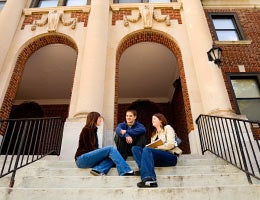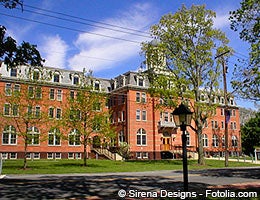Dẫn:
Bài viết dưới đây dựa trên một nghiên cứu nhỏ mà tôi đã thực hiện hồi cuối năm 2013 để tham dự hội thảo khoa học cựu sinh viên Úc lần đầu tiên tại VN. Bài viết cũng đã được gửi cho báo Nhân Dân Cuối Tuần và (có lẽ) đã đăng vào cuối tuần qua, với một số bổ sung và biên tập. Dưới đây là bài gốc mà tôi đã gửi đi. Ai có quan tâm nhiều hơn về kết quả nghiên cứu của tôi thì nhắn qua comment nhé.
--------------
Đề án 2020: Cần thay đổi tư duy quản lý
Đề án 2020: Tiến triển
tốt, nhưng cần “làm lại”?
Đề án Ngoại ngữ quốc gia 2020 (gọi tắt là Đề án 2020),được phê
duyệt năm 2008
với tổng kinh phí gần 10 nghìn tỷ đồng
, đến nay
đã đi được nửa đoạn đường. Đây là một đề án quan trọng của ngành giáo dục, với
mục tiêu “đến năm 2020 đa số thanh niên Việt Nam tốt nghiệp trung cấp, cao đẳng
và đại học có đủ năng lực ngoại ngữ sử dụng độc lập, tự tin trong giao tiếp, học
tập, làm việc trong môi trường hội nhập, đa ngôn ngữ, đa văn hóa; biến ngoại ngữ
trở thành thế mạnh của người dân Việt Nam”.
Là một đề án cấp quốc gia, Đề án 2020 được quản lý bài bản với
một Ban Chỉ đạo do một Thứ trưởng Bộ Giáo dục và Đào tạo đứng đầu, cùng một Ban
Quản lý với những nhân sự toàn thời gian để theo dõi, quản lý, giám sát và hỗ
trợ việc triển khai trên toàn quốc
. Thông
tin trên trang web của đề án
cho thấy
đề án đang được tiến hành đúng kế hoạch và tiến độ ở cả cấp quốc gia lẫn cấp cơ
sở, và mọi đang tiến triển khá trơn tru, thuận lợi.
Thật ra, ngay từ khi đề án mới được dự thảo, dư luận đã bày
tỏ sự nghi ngờ về khả năng thành công của đề án rất tốn kém và đầy tham vọng
này. Giờ đây, sự nghi ngờ đó đang có nguy cơ trở thành sự thực. Sự vội vã, thiếu
chuẩn bị và lúng túng khi triển khai; tình trạng thiếu đồng bộ “mạnh ai nấy
bơi” của các địa phương
; khoảng
cách mênh mông giữa các mục tiêu “trên trời”
và thực tại
đáng buồn của chất lượng dạy và học tiếng Anh ở Việt Nam; sự kém hiệu quả và
lãng phí khủng khiếp của các hoạt động, tất cả đã được nêu lên trên mặt báo
không chỉ một lần
.
Có thể nói, chưa bao giờ có một đề án gây bức xúc dư luận như vậy, dù những lợi
ích mà đề án sẽ đem lại cho toàn xã hội nếu nó thành công là không thể phủ nhận.
Và thật bất ngờ, sau khi đề án đã đi được nửa đường, cách
đây vài tháng, Bộ Giáo dục và Đào tạo đột nhiên tuyên bố rằng Đề án 2020 sẽ được
“xây dựng lại cho phù thực tiễn hơn”, mà báo chí đã diễn đạt lại một cách bình
dân là “xoá đi để làm lại”
.
Người thụ hưởng đề án
nghĩ gì và nói gì?
Đề án 2020 tác động đến nhiều đối tượng, trong đó giáo
viên/giảng viên (gọi chung là giáo viên) là đối tượng đáng quan tâm nhất vì họ
không chỉ là người thụ hưởng mà còn trực tiếp tạo ra những kết quả mong đợi của
đề án. Thông tin trên báo chí đang vẽ ra một bức tranh đen tối về đối tượng
này: Đó là những người yếu kém về năng lực, lo sợ sự thật bị phơi bày, không ủng
hộ việc áp dụng chuẩn năng lực cho giáo viên (“Sợ chuẩn châu Âu, 40% giáo viên
bỏ thi”
), không hăng
hái tham gia đề án với tư cách người hưởng lợi mà với thái độ miễn cưỡng chỉ để
đối phó với yêu cầu của cấp trên. Nếu nhận định trên là chính xác thì đề án
đang có vướng mắc trầm trọng, vì thiếu lực lượng nòng cốt này thì sự thất bại của
đề án là một điều đã được báo trước.
Bản thân các giáo viên có ý kiến ra sao về Đề án 2020? Để
tìm câu trả lời, một cuộc khảo sát độc lập qua mạng Internet với sự tham gia của
khoảng 90 giáo viên tiếng Anh thuộc các bậc học khác nhau tại nhiều địa phương
vào cuối năm 2013
. Dù có
quy mô rất nhỏ và chỉ có giá trị thăm dò, cuộc khảo sát cũng cung cấp cho ta được
một số thông tin ở góc nhìn của người trong cuộc.
Kết quả khảo sát cho thấy, khác với nhận định phổ biến hiện
nay, đa số giáo viên hiểu rõ mục tiêu của
đề án, và tán thành việc áp dụng chuẩn năng lực ngoại ngữ cho giáo viên (“chuẩn
châu Âu”). Tuy nhiên, các giáo viên này không được biết về kế hoạch cụ thể và
các bước triển khai đề án tại địa phương/ trường nơi mình làm việc. Nhu cầu và
nguyện vọng của họ không được ai quan tâm.
Các tiêu chí tuyển chọn các cá nhân/đơn vị đứng ra thực hiện tập huấn, bồi
dưỡng, kiểm tra-đánh giá không minh bạch; năng lực của các cá nhân/đơn vị này
có nhiều điểm cần xem xét lại, gây ảnh hưởng tiêu cực đến tâm lý của giáo viên.
Nhìn chung, cuộc khảo sát cho thấy giáo viên không được xem
là một thành phần quan trọng cho sự thành bại của đề án, mà chỉ là những cái
máy thực hiện chỉ đạo của cấp trên. Các mục tiêu của đề án không dựa trên năng
lực và điều kiện cụ thể của từng địa phương nên xa rời thực tế, gây nhiều áp lực lên các giáo viên, nhất là ở vùng
sâu vùng xa. Cách làm thiếu minh bạch và không chuyên nghiệp khiến giáo viên
không tin tưởng vào đề án, dẫn đến hiệu quả thấp.
Phải thay đổi từ tư
duy quản lý
Tuyên bố của Bộ Giáo dục và Đào tạo cách đây vài tháng về việc
sẽ xây dựng lại Đề án 2020 đã mặc nhiên thừa nhận việc triển khai đề án cho đến
nay là thiếu hiệu quả. Điều này trùng khớp với kết quả khảo sát giáo viên ở
trên, và khiến ta không khỏi ngạc nhiên rằng một đề án đầy tham vọng như vậy lại
chưa bao giờ thực hiện thu thập ý kiến phản hồi của những người trong cuộc để có
những điều chỉnh nhằm nâng cao hiệu quả của việc triển khai.
Cuộc khảo sát giáo viên đã nêu ở trên còn cung cấp nhiều gợi
ý đáng quan tâm. Cần phải thay đổi việc áp dụng chuẩn năng lực giáo viên, không
áp dụng một chuẩn chung mà phải xét điều kiện kinh tế-xã hội của các địa phương
khác nhau. Nhất thiết phải thí điểm ở một số nơi và rút kinh nghiệm trước khi
áp dụng đại trà. Cần cải thiện năng lực của chính những người thực hiện tập huấn,
bồi dưỡng và kiểm tra đánh giá trước khi để cho họ lên lớp bồi dưỡng hoặc thực
hiện và đánh giá các giáo viên khác. Những ý kiến xác đáng mà chỉ có những người
trong cuộc mới có thể nhìn ra được.
Nhưng dù có lắng nghe và thực hiện một số điều chỉnh như các
góp ý vừa nêu hoặc những ý kiến tương tự khác, đề án vẫn sẽ rất khó thành công
nếu Bộ vẫn tiếp tục giữ cách quản lý như hiện nay. Thực vậy, cho đến nay dù đã
có nhiều dư luận về tính hiệu quả của đề án thì nó vẫn đang chạy bon bon trên
con đường đã được vạch sẵn, bám sát từng hạng mục công việc được nêu trong kế
hoạch, chẳng cần biết những công việc đó chất lượng ra sao và sẽ đem lại hiệu
quả đến đâu.
Để Đề án 2020 – và các đề án tương tự – không rơi vào cảnh
thất bại từ trước khi kết thúc, đã đến lúc chúng ta phải thay đổi tư duy quản
lý và áp dụng cách quản lý dựa trên kết quả (RBM, result-based management) mà
các tổ chức tài trợ quốc tế vẫn thường áp dụng.
Trong trường hợp cụ thể của Đề án 2020, cần ngay lập tức có những thay đổi
căn bản sau đây:
- + Quan tâm đến ý kiến của người thụ hưởng thông
qua các cuộc khảo sát thường xuyên nhằm điều chỉnh mục tiêu và kế hoạch của đề
án. Một đề án được cho là đem lại lợi ích cho người thụ hưởng nhưng chính họ lại
không cảm nhận được lợi ích gì thì đề án đó là vô ích và cần dừng hẳn.
- +
Có cơ chế giải ngân theo những kết quả đạt được,
tức theo hiệu quả của công việc, chứ không theo khối lượng công việc đã thực hiện
mà không cần biết hiệu quả đó ra sao.
-
Việc đánh giá hiệu quả của đề án không thể do
chính những người thực hiện đề án mà phải thuê tư vấn độc lập và chuyên nghiệp
để thực hiện những công cụ quản lý kinh tế như phân tích chi phí – lợi ích của
đề án. Không thể tiếp tục cách quản lý vừa đá bóng vừa thổi còi hiện nay.
Một giáo viên đã từng nhận xét: Thay vì bỏ tiền mời người đến
bồi dưỡng cho giáo viên để có thể đạt chuẩn và đi thi mà thi nhiều lần vẫn
không đạt như hiện nay, các tỉnh chỉ cần có chính sách thưởng tiền cho
các giáo viên đạt sau khi đã được mức chuẩn mà đề án đã nêu ra trong một thời
gian vài năm. Chỉ cần như thế thì năng lực của giáo viên đã có thể tăng lên một
cách nhanh chóng và hiệu quả hơn hiện nay nhiều; các tỉnh không cần phải bỏ ra
một số tiền quá lớn cùng một lúc, cũng không phải bận rộn theo dõi, quản lý và
giải trình trước dư luận về hiệu quả của đề án. Một nhận xét không phải là
không đáng quan tâm, vì nó dựa trên một một tư duy quản lý mới: quản lý dựa
trên kết quả.
Chỉ có thay đổi tư duy quản lý mới có thể giúp Đề án 2020
tránh khỏi sự thất bại đã được báo trước mà thôi.

 For-profit
colleges are either an acceptable alternative to nonprofit schools or a
symptom of a failing higher-education system, depending on whom you
ask. While critics and numerous studies argue that for-profit schools
offer higher loan-default rates, lower quality of education and fewer
job prospects than nonprofit schools, many from the for-profit sector
believe these schools are quicker to respond to job market demands,
offer more flexible class scheduling and cater to a student demographic
that may have few options.
For-profit
colleges are either an acceptable alternative to nonprofit schools or a
symptom of a failing higher-education system, depending on whom you
ask. While critics and numerous studies argue that for-profit schools
offer higher loan-default rates, lower quality of education and fewer
job prospects than nonprofit schools, many from the for-profit sector
believe these schools are quicker to respond to job market demands,
offer more flexible class scheduling and cater to a student demographic
that may have few options. "One
of the biggest myths right now surrounding for-profits is that they're
all created equal, and they aren't," says Michelle Asha Cooper, Ph.D.,
president of the Institute for Higher Education Policy, a higher
education policy and research nonprofit based in Washington, D.C.
"Certainly there are institutions that are serving their students well,
and there are institutions that are not serving their students well.
That's a similar model that you'll find in the nonprofit sector."
"One
of the biggest myths right now surrounding for-profits is that they're
all created equal, and they aren't," says Michelle Asha Cooper, Ph.D.,
president of the Institute for Higher Education Policy, a higher
education policy and research nonprofit based in Washington, D.C.
"Certainly there are institutions that are serving their students well,
and there are institutions that are not serving their students well.
That's a similar model that you'll find in the nonprofit sector." "(For-profit
schools) tend to be academic learning centers," says Steve Gunderson,
president and CEO of the Association of Private Sector Colleges and
Universities, a trade organization of for-profit colleges based in
Washington, D.C. "They're often in strip malls that are along major
thoroughfares in the city. In other words, they're focused almost
exclusively on the academics of postsecondary education, not the social,
cultural parts that many of us enjoy."
"(For-profit
schools) tend to be academic learning centers," says Steve Gunderson,
president and CEO of the Association of Private Sector Colleges and
Universities, a trade organization of for-profit colleges based in
Washington, D.C. "They're often in strip malls that are along major
thoroughfares in the city. In other words, they're focused almost
exclusively on the academics of postsecondary education, not the social,
cultural parts that many of us enjoy." Relatively
few recent high school grads attending school full time flock to the
halls of for-profit schools. These schools typically cater to
nontraditional students, including older students with full-time jobs,
parents, military veterans, at-risk students and those who need flexible
class scheduling.
Relatively
few recent high school grads attending school full time flock to the
halls of for-profit schools. These schools typically cater to
nontraditional students, including older students with full-time jobs,
parents, military veterans, at-risk students and those who need flexible
class scheduling. For-profit
schools generally cost more than their four-year counterparts. A recent
report produced by the U.S. Senate Committee on Health, Education,
Labor, & Pensions, backed by Sen. Tom Harkin, shows that a degree at
for-profit two-year schools is approximately four times more expensive
than the same degree at a nonprofit community college. The typical
for-profit bachelor's degree program costs 19 percent more than a
comparable degree at a nonprofit four-year public school.
For-profit
schools generally cost more than their four-year counterparts. A recent
report produced by the U.S. Senate Committee on Health, Education,
Labor, & Pensions, backed by Sen. Tom Harkin, shows that a degree at
for-profit two-year schools is approximately four times more expensive
than the same degree at a nonprofit community college. The typical
for-profit bachelor's degree program costs 19 percent more than a
comparable degree at a nonprofit four-year public school. The
30 major for-profit education companies analyzed in the Committee on
Health, Education, Labor, & Pensions report spent an average of 17.2
percent of revenue on instructional costs in 2009. In comparison,
four-year public schools spent 29.5 percent, and private colleges and
universities spent 32.7 percent, according to 2010 data from the
National Center for Education Statistics .
The
30 major for-profit education companies analyzed in the Committee on
Health, Education, Labor, & Pensions report spent an average of 17.2
percent of revenue on instructional costs in 2009. In comparison,
four-year public schools spent 29.5 percent, and private colleges and
universities spent 32.7 percent, according to 2010 data from the
National Center for Education Statistics . For-profits
aren't the only institutions with low graduation rates. Public schools
such as Kent State University at East Liverpool in Ohio, Texas Southern
University in Houston and Rogers State University in Claremore, Okla.,
all have six-year graduation rates of 12 percent or less among full-time
students, according to the National Center for Education Statistics.
Private schools have their share as well with schools such as Martin
University in Indianapolis and Allen University in Columbia, S.C.,
boasting graduation rates of 8 percent and 9 percent, respectively.
For-profits
aren't the only institutions with low graduation rates. Public schools
such as Kent State University at East Liverpool in Ohio, Texas Southern
University in Houston and Rogers State University in Claremore, Okla.,
all have six-year graduation rates of 12 percent or less among full-time
students, according to the National Center for Education Statistics.
Private schools have their share as well with schools such as Martin
University in Indianapolis and Allen University in Columbia, S.C.,
boasting graduation rates of 8 percent and 9 percent, respectively.